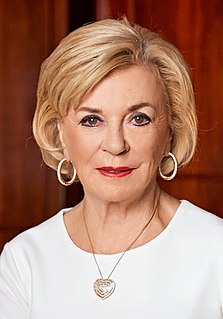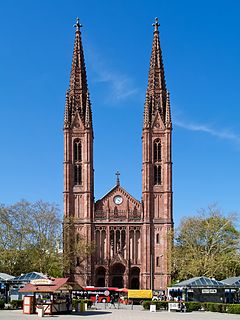
Old Elbe Tunnel or St. Pauli Elbe Tunnel which opened in 1911, is a pedestrian and vehicle tunnel in Hamburg. The 426 m long tunnel was a technical sensation; 24 m beneath the surface, two 6 m diameter tubes connect central Hamburg with the docks and shipyards on the south side of the river Elbe. This was a big improvement for tens of thousands of workers in one of the busiest harbors in the world.

European Heritage Days (EHD) is a joint action of the Council of Europe and the European Commission involving all 50 signatory states of the European Cultural Convention under the motto, Europe: a common heritage. The annual programme offers opportunities to visit buildings, monuments and sites, many of which are not normally accessible to the public. It aims to widen access and foster care for architectural and environmental heritage. These events are also known as Doors Open Days and Open Doors Days in English-speaking countries.
The European Route of Brick Gothic (EuRoB) is an association of cities, towns, regions, municipalities and institutions that have Brick Gothic buildings in their territory or have their headquarters in a Brick Gothic building. The network also includes several sponsors and cooperation partners.
The University Medical Center Hamburg-Eppendorf is the teaching hospital of the University of Hamburg and the largest hospital in Hamburg, Germany.

The Internationales Maritimes Museum Hamburg is a private museum in the HafenCity quarter of Hamburg, Germany. The museum houses Peter Tamm's collection of model ships, construction plans, uniforms, and maritime art, amounting to over 40,000 items and more than one million photographs. It opened in a former warehouse in 2008.
The German Environmental Prize is a government-sponsored award for protecting the environment. Worth €500,000, it is one of the most valuable environmental awards in Europe.

Jenisch House (Jenisch-Haus) is a country house in Hamburg built in the 19th century and an example of Hanseatic lifestyle and neoclassical architecture. As of 2008, Jenisch House is the home of the Museum für Kunst und Kultur an der Elbe. It is located within the Jenisch park in the Othmarschen quarter.

Elisabeth Mohn is a German billionaire businesswoman and philanthropist. She was married to Reinhard Mohn until his death in 2009.

St. Bonifatius in Wiesbaden, Germany, is the central Catholic parish and church in the capital of Hesse. The present building was designed by architect Philipp Hoffmann in Gothic Revival style and built from 1844 to 1849. Its twin steeples of 68 m (223 ft.) dominate the Luisenplatz. The parish is part of the Diocese of Limburg.

The Deutsche Stiftung Denkmalschutz is a German private initiative founded in 1985 that works for the preservation of cultural heritage in Germany and to promote the idea of cultural heritage management.

Kulturdenkmal is the official term to describe National Heritage Sites listed by law in German-speaking areas of Europe, to protect and spread awareness of cultural heritage.

The Ringkirche is a Protestant church in Wiesbaden, the state capital of Hesse, Germany. The Romanesque Revival church was built between 1892 and 1894 and designed by Johannes Otzen. The historic monument also serves as a concert venue.

The Memorial and Information Point for the Victims of National Socialist Euthanasia Killings is a memorial in Berlin, Germany to the victims of Nazi Germany's state-sponsored involuntarily euthanasia program. Over 70,000 people were murdered between 1940-41 under official order of Aktion T4. Despite the program's technical cessation in August 1941, the killings continued in state-run institutions and care facilities until Germany's surrender in 1945. This amounted to a death toll of approximately 300,000.

The Badischer Hof is the oldest hotel in Tauberbischofsheim. In 1733 it was built as the former Adelshof by the knight Anton Phillip von Fleischmann. Later, it was as a post office. In 1811 it received its present name: Badischer Hof. In 1894 a hall with large arched windows was added. In the hotel there is also a nostalgic movie theater. The house was obtained externally faithfully and since eight generations it belongs to the family Derr. It is a listed building.

The Wiesloch Feldbahn and Industrial Museum is a narrow-gauge railway and industrial heritage open-air museum established in 2001, at Wiesloch, Germany. The museum is centred around the former locomotive shed of the Tonwaren-Industrie Wiesloch (TIW) brickworks, and houses industrial equipment from large excavators to small machine tools, plus large and small locomotives.
Justus Wehmer was a German master builder of the Baroque era. He was the architect of the eighteenth century Hildesheim Cathedral and surrounding buildings. He was also responsible for the design of various town houses and manor houses in Westphalia.

The Protestant Church in Wilnsdorf, North Rhine-Westphalia, Germany, was completed in 1913. It has been the main church for merged parishes from 2010. The official name of the new parish is Evangelisch-Reformierte Kirchengemeinde Rödgen-Wilnsdorf, The parish is part of the Kirchenkreis Siegen in North Rhine Westphalia.

The Luther Monument is a group of statues that was erected in Worms, Rhineland-Palatinate, Germany, to commemorate the Protestant reformer Martin Luther. It was designed and partly made by Ernst Rietschel, and unveiled on 25 June 1868. The monument consists of a group of bronze statues on stone plinths centred on a statue of Luther, surrounded by statues of related individuals and allegorical statues representing related towns. The elements are arranged in the shape of a castle, recalling Luther's hymn "Ein feste Burg ist unser Gott". It is one of the largest Luther Monuments, and shaped views of the reformer. Copies of the central Luther statue are located in Europe and the United States, including the Luther Monument in Washington, D.C. (1884).
Dankwart Guratzsch is a German journalist. He has made a name for himself above all as an architecture critic.















